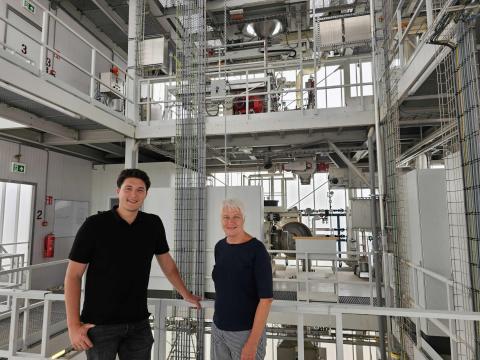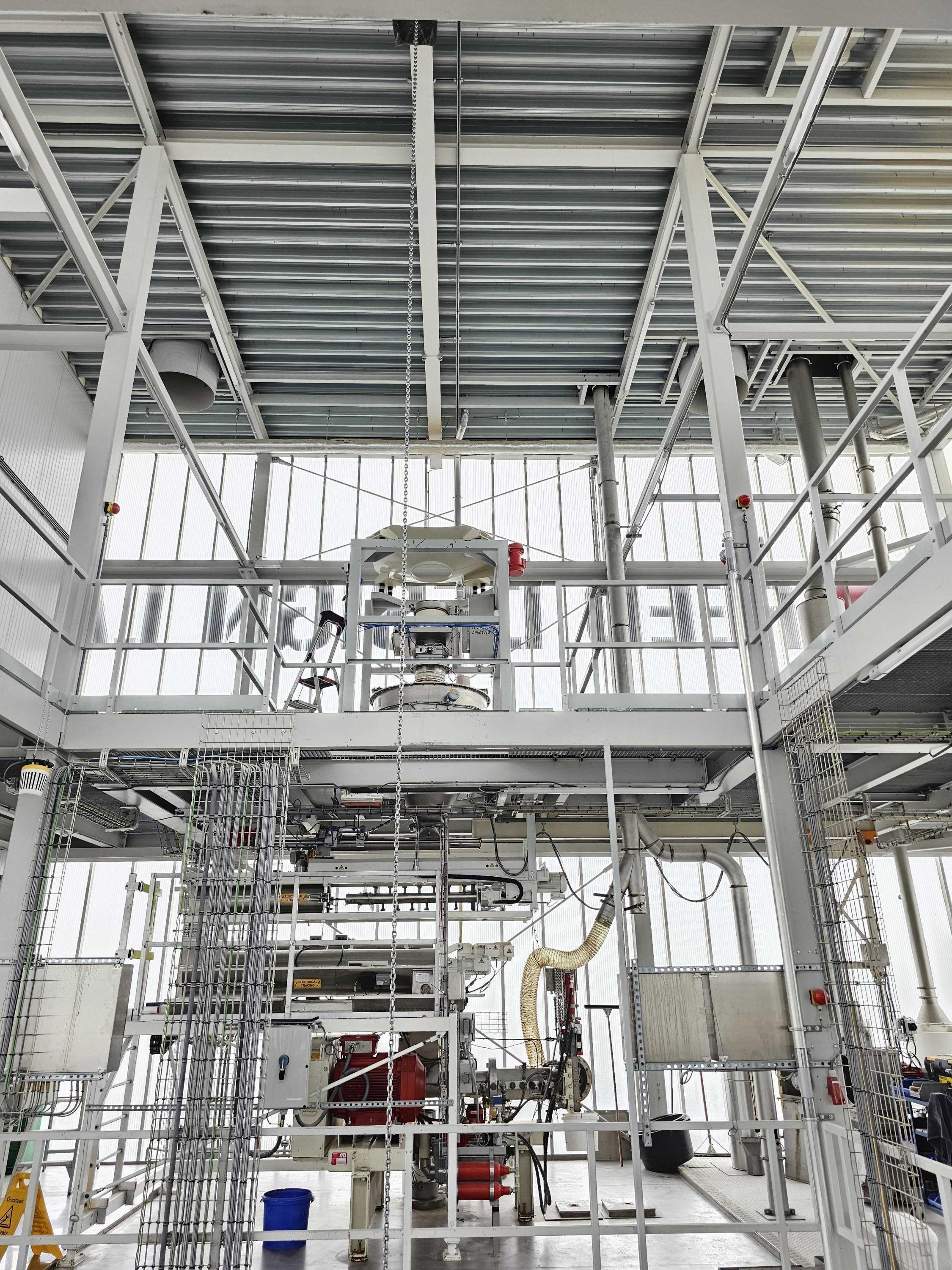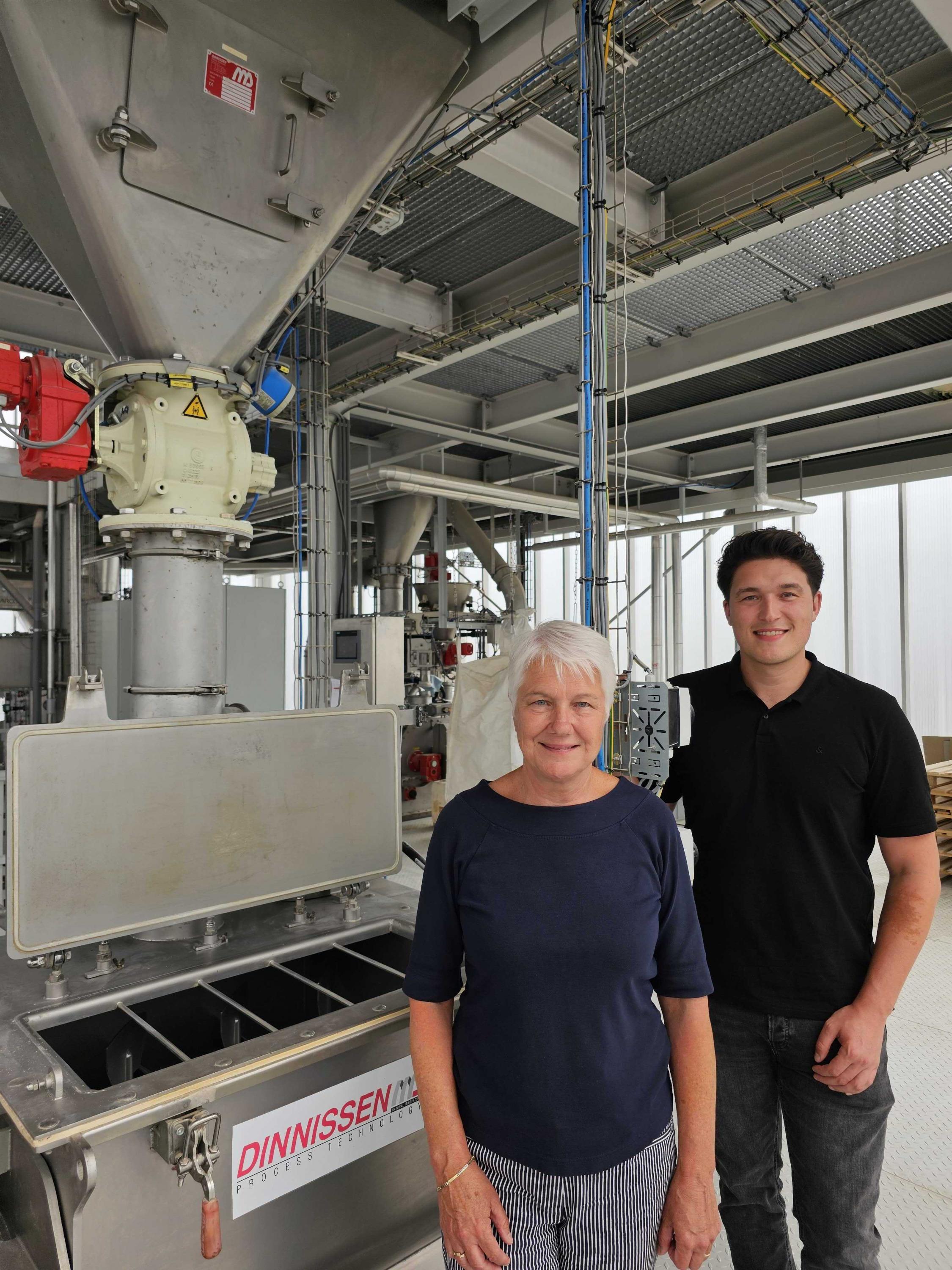Partner Story: Feed Design Lab
Partner Story: Feed Design Lab
Feed Design Lab and Dinnissen: 10 years of innovation in the feed industry
For over 75 years, our machines and process expertise have contributed to innovating and improving animal feed production processes. Ten years ago, the feed industry experienced a significant acceleration with the establishment of Feed Design Lab (FDL). This unique, independent foundation, partner network, and pilot plant brings together a large part of the global feed industry to collaborate on improvements, sustainability, and innovation. This chain collaboration is unique on a global scale.
Dinnissen is one of the Founding Fathers of FDL. In this interview, FDL Director Trudy van Megen and Dinnissen feed expert Juul Jenneskens discuss:
- What Feed Design Lab is and how it was founded
- The explosive growth from 2 to 115 FDL partners
- Why Dinnissen considers Feed Design Lab crucial
- How a complete feed factory was rapidly realized
- Which innovations were born or tested in the FDL pilot plant
- The future challenges and opportunities in the feed industry

Juul Jenneskens (Dinnissen) and Trudy van Megen (FDL) in the Feed Design Lab.
“The mission of Feed Design Lab? To drive innovation and sustainability in the global feed industry. And for that, innovative partners like Dinnissen are crucial.”
Trudy van Megen, director Feed Design Lab
What is Feed Design Lab?
Feed Design Lab is the practical research and education center for innovation and sustainability in the animal feed sector. 115 companies from the entire sector, both national and international, are partners at Feed Design Lab and actively participate in the network. Feed Design Lab has four main activities: renting out the test factory, providing training for the community of 115 partner companies, developing innovation projects, and organizing knowledge sessions. Feed Design Lab is unique in this regard – nowhere else in Europe do research, science, training, and trial feed production all take place within the same institute.

Overview of a feed test line.
How Feed Design Lab was founded
The idea for Feed Design Lab came from Jan Janssen, then director of feed producer Vitelia, and Henri Michiels, then director of Dinnissen. Around 2007, the feed industry faced several challenges too big for any single company to solve. Food sources were becoming scarcer, and sustainability was increasingly important. Innovation on major themes was urgently needed, and that could only come from collaboration. Janssen and Michiels said, "We might make the best feed in the world, but we are not ready for the future. We need to move away from soy and broaden to other raw materials with different properties and necessary processing. But we are not equipped for that."
They needed to redesign feed, but no feed producer wanted to halt their own production for this. A mini factory was needed to experiment and innovate. A place where strengths could be combined, and knowledge sharing, and innovation could occur across the entire chain. The idea for ‘Feed Design Lab’ was born.
Pioneers and investors were sought and found. Vitelia, Dinnissen, DSM, Imtech, and HAS University of Applied Sciences joined forces and formed the foundation of Feed Design Lab. Janssen and Michiels only needed someone to turn the idea into a plan and execute it. That person was found in Trudy van Megen. With a background in horticulture, mushrooms, and livestock, Van Megen was then the program manager ‘Sustainability in Livestock Farming’ for ZLTO.
Trudy van Megen took on the challenge, and in 2014 Feed Design Lab was opened, including a state-of-the-art pilot factory. Now, 10 years later, Feed Design Lab has become larger and more important than anyone could have predicted.
Trudy van Megen (FDL) on the early years
"In the early years, there were enough challenges," begins Trudy van Megen. "Oddly enough, realizing the feed factory for research and trials was the simplest part. From day one, I realized that it could only work if Feed Design Lab was completely independent. We needed to build a network of companies – and competitors – that would collaborate on innovation and sustainability. On the other hand, the companies renting the pilot factory had to trust that their test results remained confidential."
It also meant that early partners invested heavily without an immediate return. "Several partners took the plunge and were crucial in the early phase. Dinnissen provided 10 of the first 13 machines, largely at their own expense. Without Dinnissen, Feed Design Lab would never have existed. Other founding fathers also made significant financial contributions. 75% of the investment was covered by industry. That is still unique to me. It ensured that all partners had a huge stake in the success of Feed Design Lab."
The joint investment had the desired effect. "The pilot factory proved to be a great idea from Janssen and Michiels. Companies from across the chain could now test and improve on a small scale to create better feed, resulting in better growth performance, better conversions, better animal welfare, and a better environment.”
Why Dinnissen collaborates with Feed Design Lab
Juul Jenneskens, feed process expert at Dinnissen, explains why the machinery manufacturer has been investing in Feed Design Lab for years. "We share a similar mission with Feed Design Lab. With our machines and production lines, we contribute to efficient and reliable global food production. To continue feeding the growing number of people and animals, the world depends on feed and food producers.
We see it as our responsibility to help these producers become increasingly effective and sustainable. By working closely with our customers and partners, we help and support each other in this mission. Together, our impact is much greater. Feed Design Lab’s mission to make the feed sector more sustainable and the way FDL does it – innovating together, sharing knowledge, bringing partners together – aligns perfectly with our philosophy.”
Van Megen adds: "What I found particularly remarkable was that during the corona crisis, when FDL faced liquidity problems, a single evening of calling our founding fathers was enough to secure the necessary funds for our survival. Moments like that show you the value of your partners. It demonstrates how highly Dinnissen and our other partners value sustainability, innovation, and partnership."
Unique FDL courses where theory and practice meet
Jenneskens continues: "I remember the first time I walked into FDL. I was at the start of my career at Dinnissen, and I was amazed. For the first time, I saw – step by step – what happened in a process line. Theory and practice came together. At our clients' facilities or during tests in our D-innocenter, you often only see part of the process. This limits your ability to analyze and optimize process lines.

Trudy van Megen and Juul Jenneskens in the Feed Design Lab.
Here at FDL, you can adjust almost every parameter. This gives you a better understanding of the impact an adjustment in one machine has on the next process step. And since feed sometimes goes directly from here to trial barns, you also see how the animals respond. Product properties, material properties, process knowledge, biology; it all comes together here. You learn to make connections. Years ago, I took courses here at FDL, and I still benefit from them every day. I now have a broader and deeper knowledge and understanding. I use this to advise customers and improve our lines daily." Jenneskens emphasizes the importance of not just the workshops and courses, but also the network for the sector. "The youth network is essential to make and keep the sector attractive for the technical talent of the future. Recently, there was a youth congress with 140 participants from the Netherlands and Belgium. Such events didn’t exist before FDL."
Innovation in the feed industry: examples of projects and results at Feed Design Lab
Feed Design Lab plays a crucial role in advancing innovation within the feed industry. We asked Trudy van Megen what exactly happens here. Here are some examples of innovations tested or developed at FDL by FDL partners:
- Insects as animal feed: "Insects are now widely accepted as a potential protein substitute in animal feed and have been approved by the EU. Other alternative protein sources such as algae and by-products from the food industry are also seen as promising raw materials for the future."
- Protein and fiber components: "Proteins need to be fine, while fibers need to remain coarse. But they all go through the same hammer mill. After research at FDL, some producers now choose to grind protein sources and fibers separately to improve feed quality and conversion."
- Wet algae in dry feed: "Ten feed companies have jointly investigated whether and how wet algae (as a soy replacement) can be processed in dry feed and how chickens in trial barns respond. This led to the successful incorporation of 10% wet algae in feed."
- Applying dry powders to pellets: "Solutions have been developed to apply dry powders to feed pellets so that they adhere well."
- Utilizing new by-products: "By treating raw materials differently or more intensively, new or additional by-products can be utilized. For example, tests are being conducted to create a good pellet with much more beet pulp."
- Precision coating: "Additive manufacturers now use Dinnissen's precision coaters to dose additives much more accurately and effectively (with less product loss), driven by the desire to become more sustainable."
Juul Jenneskens adds: "What's great to see is that some innovations from FDL don't stop at feed. The technology behind the cutter is now also used by one of our clients in the food industry. They now process wet streams into dry food there. So, innovations developed here at FDL in feed have even more impact across multiple industries and countries."

Hammer Mill in the Feed Design Lab.
Van Megen on the future of the feed industry and FDL
Trudy van Megen is optimistic about the future of Feed Design Lab. "I hope we inspire people here and plant seeds of innovation and inspiration in companies.”
Although Feed Design Lab is a great success, Van Megen sees room for further growth and collaboration. "More companies should come together to achieve sustainability goals. Most innovation at FDL is still driven by individual companies. I would like to see us move from individual company efforts to tackling major themes together. The steps we take towards a 100% climate-neutral and circular feed industry need to become larger each year."
Van Megen also emphasizes the importance of communication. "We need to communicate more, in both directions. We need to keep telling how important intensive livestock farming is in processing by-products. If livestock farming disappears, where will those by-products go? That side of the story is often not heard. On the other hand, we also need to be more vulnerable and acknowledge that we are part of the environmental problem. We don't do that enough yet."
The livestock industry in Europe faces major challenges, but Van Megen also sees opportunities. "It's not an easy time for the feed sector in this part of Europe. We must seize the opportunity to excel in circularity. Ten years ago, we were laughed at for our ideas about insects and algae, but now you can't open a trade magazine without reading about them. FDL has played a significant role in that.
If we as an industry join forces, much is possible. The past ten years have laid the groundwork. Now it's time to pick up the pace."
Do you have a question about your process?
- 75 years of experience in your industry as a system integrator
- Everything in-house: engineering, production, testing, installation, control and service
- Always a tailor-made solution for your complete process
